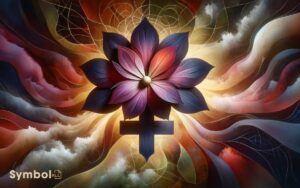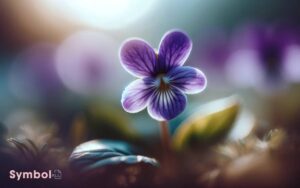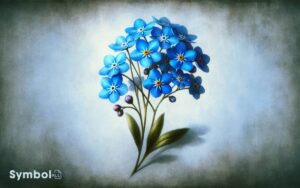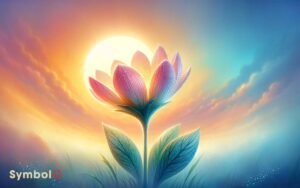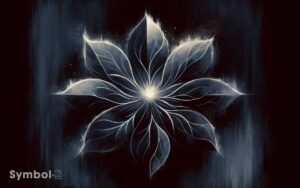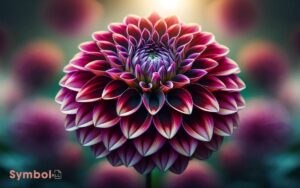What Does Lilac Flower Symbolize? Renewal, Innocence!
The lilac flower, with its origins in Eastern Europe and Asia, conveys renewal, innocence, and the stirrings of first love. It’s deeply embedded in human tradition, linked to the nymph Syringa from Greek mythology, symbolizing youthful innocence and the cyclical nature of life.
In the Victorian era, lilacs communicated complex emotions through the language of flowers, embodying feelings like passion and sadness.
Color variations further refine its symbolism; white lilacs express purity and innocence, while purple shades signify spirituality and wisdom. Pink hues are tied to love and passion.
Unraveling the layers of the lilac’s symbolism reveals its rich tapestry in cultural and emotional landscapes.
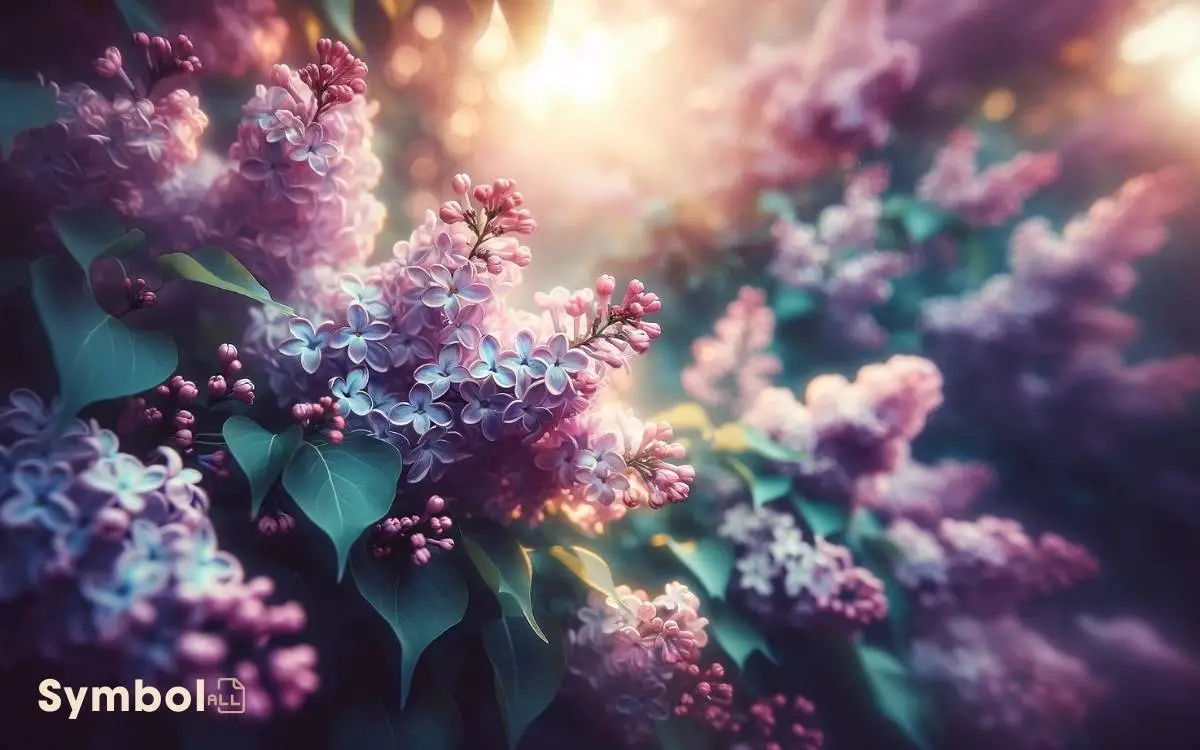
Key Takeaways
Historical Significance
Lilac flowers, with their rich history, have served as symbols of renewal and innocence across various cultures for centuries.
Originating from Eastern Europe and Asia, lilacs have permeated various cultural narratives, embodying the essence of spring’s arrival and the rejuvenation of the earth.
Scientifically known as Syringa vulgaris, these perennials aren’t just horticultural delights but carry profound emblematic significance.
In ancient Greek mythology, the lilac is linked to the nymph Syringa, representing a demure strength and youthful innocence. This etymology underpins the lilac’s historical symbolism, where its blooms are often interpreted as heralds of joyous change.
Analyzing these cultural intersections, you’ll find lilacs encapsulate themes of youthful innocence and the cyclical nature of life, resonating deeply within human psychology and societal traditions.
Victorian Language of Flowers
You must understand that in the Victorian era, lilacs held a significant role in expressing emotions where direct verbalization was often constrained.
These flowers were integral to the complex flora communication codes, serving as symbols to convey messages that societal norms wouldn’t permit to be spoken aloud.
Analyzing lilac’s usage within this context reveals insights into the nuanced ways Victorians navigated their emotional landscapes through botanical mediums.
Victorian Emotional Expressions
Delving into the Victorian Language of Flowers, we find that lilac blossoms served as nuanced symbols of emotional expression, conveying sentiments that ranged from love’s first excitement to the bitterness of rejection.
The complexity of human emotions was elegantly encapsulated within these floral messages, adhering to a codified system that was both intricate and highly regarded.
To understand the depth, consider these aspects:
- Innocence and Youth: White lilacs symbolized purity, reflecting the tender beginnings of feelings.
- First Love: The lavender lilacs whispered of new love, embodying the sweet anticipation of romance.
- Passion: Purple lilacs, deeper in hue, signified a stronger emotion or love at its maturity.
- Sadness and Remembrance: In some contexts, lilacs could also mourn a lost love or recall fond memories, serving as a bridge between joy and sorrow.
Flora Communication Codes
In the Victorian era, people developed a sophisticated botanical language to convey complex emotions and messages without uttering a single word. This system, known as floriography, was intricately detailed and widely understood among the populace.
Each flower, including the lilac, held specific meanings depending on its color and context. For instance, a white lilac symbolized innocence and purity, while a purple lilac suggested first love or mourning.
This coded language allowed individuals to express feelings and sentiments in a society where direct expression was often frowned upon.
Analyzing the Victorian use of lilac within this botanical lexicon reveals a nuanced communication method, combining botanical knowledge with social customs to navigate the complexities of interpersonal relationships and societal expectations.
Symbol of First Love
You’ll find that lilac flowers hold a prominent place in the domain of initial loves, grounded in their origins across ancient cultures.
This symbolism isn’t only preserved but also celebrated in modern contexts, reflecting a nuanced understanding of their emotional significance.
An analytical exploration into these aspects reveals how lilacs serve as a complex emblem of budding romantic feelings.
Origins in Ancient Cultures
The symbolism of lilac flowers as a symbol of first love has its roots in ancient cultures, where these blooms held significant emotional and spiritual value.
Understanding this deep-rooted significance involves examining several key aspects:
- Historical Cultivation: Lilacs were cultivated in ancient gardens, often symbolizing the innocence and excitement of a first love.
- Mythological Associations: Various myths associate lilacs with divine love stories, highlighting their role in expressing unspoken emotions.
- Color Variations: The color of lilacs, particularly purple, was historically linked to the emotions of first love, blending passion with tenderness.
- Fragrance: The distinct fragrance of lilac blooms was believed to evoke emotional memories, solidifying their association with youthful love and affection.
Modern Celebratory Associations
Building on ancient traditions, modern celebrations continue to embrace lilac flowers as a symbol of first love, reflecting their enduring appeal across generations.
This association isn’t arbitrary; scientific analysis reveals that the lilac’s distinct fragrance and delicate hues are likely to induce a strong emotional response, conducive to memories of first love.
Studies in color psychology suggest that the lilac color, a blend of calming blue and energetic red, evokes feelings of serenity and passion elements often associated with the exhilaration of new love.
Additionally, the phenology of lilacs, blooming at the cusp of spring, symbolizes renewal and the beginning of a cycle, mirroring the nascent stages of romantic affection.
These factors collectively underscore lilacs’ modern celebratory role as a first love emblem, grounded in both empirical research and cultural continuity.
Emotional Significance Explored
Exploring the emotional significance of lilac flowers reveals that their symbolism as a first love emblem is deeply rooted in psychological mechanisms and cultural narratives.
- Innate Responses: Humans are naturally drawn to the color and fragrance of lilacs, which can trigger emotional responses associated with first love.
- Cultural Narratives: Various cultures have stories and myths linking lilacs with young love, embedding these flowers with profound symbolic meaning.
- Memory Trigger: The distinctive scent of lilacs can evoke vivid memories of past relationships, often those classified as first loves.
- Psychological Symbolism: Lilacs in bloom signify renewal and the ephemeral nature of love, reflecting the intense, yet fleeting, emotions experienced during one’s first romantic encounter.
Understanding this symbolism requires an exploration into both the biological reactions and the socio-cultural contexts that frame our emotional connections to lilacs.
Representations of Innocence
Lilac flowers often symbolize innocence, embodying purity and the youthful naiveté frequently associated with early experiences. This representation stems from the delicate nature of the lilac’s bloom, which mirrors the fragile state of innocence.
In botanical terms, the lilac’s perennial cycle of renewal and its early spring appearance underscore themes of rebirth and new beginnings, paralleling the human journey from innocence to experience.
Scientifically, the color of lilac flowers, ranging from light purple to white, contributes to their symbolism. Light purple shades are often associated with first love and enchantment, reinforcing the connection to innocence.
Detailed analysis of lilac’s phenology its timing of bloom reveals its role as a herald of spring, symbolizing the awakening of nature and, metaphorically, the awakening of one’s awareness to the complexities of life, yet through a lens of purity and simplicity.
Spiritual Meanings
Beyond their representation of innocence, lilac flowers also hold profound spiritual meanings, deeply rooted in various cultural beliefs and practices.
These flowers aren’t merely ornamental; they’re imbued with significant spiritual symbolism:
- Renewal and Rebirth: In many cultures, lilacs symbolize spring’s arrival, representing the earth’s rejuvenation and the cycle of life.
- Spiritual Wisdom: Lilacs are often associated with the enlightenment that comes with spiritual growth, suggesting an awakening of the soul.
- Divine Protection: Some traditions believe lilacs offer protection against malevolent spirits, fostering a safe environment for spiritual practices.
- Magical Properties: In various folklore, lilacs are thought to possess magical properties, including enhancing psychic abilities and bringing about peace and harmony.
Understanding these spiritual associations enhances your appreciation of lilacs, transforming them from mere flowers into symbols of deeper spiritual truths.
Connection to Easter
With the arrival of Easter, lilacs often play a pivotal role in symbolizing themes of hope and renewal, deeply intertwined with the festival’s historical and religious connotations.
The timing of lilac blossoming aligns with Easter celebrations in many regions, marking the shift from the cold, barren winter to the vibrant, life-affirming spring. This synchronicity isn’t merely coincidental but reflects a deeper ecological and cultural resonance.
Lilacs, with their lush, fragrant blooms, serve as a natural emblem of Easter’s promise of resurrection and rebirth. Scientifically, the flower’s rapid springtime emergence from dormant winter buds is a vivid illustration of life’s resilience and the cyclical nature of renewal.
Their presence at Easter gatherings and services underscores the interconnectedness of natural cycles and spiritual themes, offering a multifaceted symbol of hope.
Mourning and Remembrance
In many cultures, people have historically used lilac flowers as symbols to express grief and honor the memory of loved ones. The significance of lilacs in mourning and remembrance is deeply rooted in their characteristics and presence throughout history.
- Biological Resilience: Lilacs, known for their hardiness, symbolize the enduring nature of love beyond physical existence.
- Olfactory Impact: The distinct fragrance of lilacs can evoke memories, serving as a sensory reminder of those who’ve passed.
- Seasonal Bloom: Their springtime appearance offers a metaphor for renewal and the cycle of life and death.
- Historical Usage: Throughout history, lilacs have been present at funerals and memorial sites, reinforcing their association with mourning and remembrance.
Understanding these aspects provides a nuanced appreciation of lilacs’ role in expressing bereavement and commemorating the departed.
Variations by Color
Lilac flowers exhibit a diverse palette of colors, each carrying its own unique symbolism and psychological impact on observers. The white lilac, representing purity and innocence, often evokes a sense of serenity and simplicity.
In contrast, the purple shades, from light lavender to deep violet, symbolize spirituality, wisdom, and a deeper understanding of the universe.
These colors are often associated with a sense of mystery and magic, drawing on the psychological effects of purple to stimulate creativity and deepen introspection.
The rare pink lilac introduces an element of love and passion, albeit more nuanced and tender than the fiery reds of other flowers.
Each color variation not only adds to the visual appeal of the lilac but also enriches the symbolic language it communicates, offering a multifaceted approach to interpreting its presence and meaning in different contexts.
Conclusion
To conclude, the lilac’s languid blooms embody a lexicon of love, loss, and renewal.
Through the lens of scientific scrutiny, we discern its dual role in ecosystems and emotions, bridging botanical beauty with profound human sentiments.
From its first flush of love to the somber shades of sorrow, each hue holds a hypothesis of the heart, underpinning the perennial power of these petals.
Therefore, the lilac stands as a confirmation to the intricate interplay of nature and nurture, symbolizing the spectrum of life’s fleeting fragrances.

